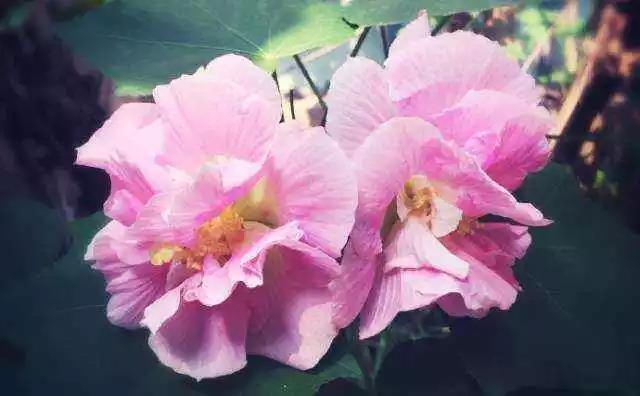



Wuma Fang, Dengxuan Fang …are the street names derived from the historic Pai Fang that still linger in Wenzhou local life.
The old downtown area in Wenzhou used to be a forest of Pai Fang.The Wenzhou's local chronicle from Hongzhi era(the ninth emperor in Ming Dynasty) — Wenzhou Fu Zhi accounted 109 "Fang Men", another name for Pai Fang,in the old Yongjia County(nowadays city center), among which at least 27 located in today's Wuma block.


Wang Zan (1462 ~ 1524),surname Sixian, epithet Oubin, from the village now known as Dianqian Village in Longwan district Yongzhong precinct, famous contemporarily for his calligraphy, attended the county school at the age of 13, and gained accreditations through a series of Chinese imperial examinations first the Provincial at 27 years old then the national at 34. His first foray into the imperial government at 37 only herald a career life marked by gradational promotions from one of the managers in the Ministry of Works to deputy department director, department director, mayor in Kaifeng City and so on to the high-up, thus etched into the memory of Wenzhou history with such resounding preeminence.

▲The Wang Zan Academy in Baiyangong
During the decades from the Emperor Hongzhi to Jiajing, Wang Zan served nearly all major state departments dealing with education, like the State Academy, the State College and the Ministry of Rites which was in charge of planning, executing and evaluating the imperial examinations, not to mention the vice Minister and Minister position virtually for the Education Ministry in modern concept he ended up with. He was two terms principal for the State College and presided over the national imperial exams for four times. His participation in the compilation of the Ming histoy, teaching on Chinese classics to pupils and colossal scholarly writings left behind have heaped the laurel of "the Titan in scholarship and pedagogy" on him crowning his contribution in cultural and educational affairs.
Bang Yan Fang
The Pai Fang which acquired its name from the inscription "Bang Yan" on it was, according to the local chronicle Wenzhou Fu Zhi from the Ming Dynasty, erected for “Wang Zan's achievement in the state imperial exam” in the location at "Wumaheng Alley" — the now Houshi Alley in Wuma Street. By the time of the Qing Emperor Guangxu, the archives from that time — Yongjia Xian Zhi — changed the Pai Fang’s location to “the Zhi Street in front of Qiao Tower”, namely the Gongan Road nowadays, which indicated the fact that it had been reconstructed.
an nickname attached by the people referring to his second place in the exam grade ranking list(Bang Yan literally means the eye’s place of the ranking list) — had his legend tightly interwoven with the Wuma Street. Folk tale has it that the Fu Rong Academy(the same spot of today’s Dongnan High-rise) where Wang Zan pursued knowledge in his youth would have Fu Rong(Confederate rose) blooming per September, yet in the tenth year of his learning (1495, the eighth year under the Emperor Hongzhi), the Confederate rose tree in the Academy "unprecedentedly outburst with dazzling kaleidoscope of colors and a deluge of hundreds of flowers in, unseasonably, mid-May".
The prodigy seemed to have prophesied auspiciously — he triumphed in the Provincial exam that autumn and prevailed at the second place in the State exam next year.

The county magistrate Wu Chuanlin was so exhilarated by the exploit not only composed he poems to praise the auspice, which evoked scores of responsive verses from others, but also raised he, in the name of the local government, the "Bang Yan" Pai Fang at the Houshi Alley in Wuma Street.
Ji Jiu Fang
Inscribed with the charactors "Ji Jiu"(the official position designated as the headmaster of the State College), the Pai Fang stood at the eastern end of Wuma Street "in glorification of Wang Zang" as documented in the Yongjia Xian Zhi — the chronicle from the Qing Emperor Guangxu's era.
A man of unyielding candor and utter magnanimity, Wang Zan submitted memorials to the throne recommending candidates of virtue while admonishing against wrong judicial convictions, and not least, posing a whole compendium of historic unscrupulousnesses from eunuchs and concubines in intimacy with the monarchs so as to sound a veiled alarm to the Highness about the looming danger from his most favored eunuch — Liu Jin.

▲The Bang Yan Gong Temple
Ignited by Wang Zan's opposition against him, Liu Jin, while at his height of political power, wielded his influence over the Emperor to, in the name of the sovereign, whip Wang with reprimands then relegate him to the inferior position of rank and file in the State College. It was until Liu Jin met his fate of a capital punishment after the disclosure of his conspiracy was Wang Zan resurrected to be Ji Jiu — the Principal of the State College, and later the vice Minister of the Ministry of Rites.
The Pai Fang of Ji Jiu was the one preserved longest among all Pai Fangs in Wuma Street, it stood until its demolition called by the urban construction in 1936. It was documented in the 1882(eighth year under the Qing Emperor Guangxu) atlas — Architectures, Waterbodies, Arteries and Administrative Divisions in the Ancient City Wenzhou — that the name “Ji Jiu Fang” was once the namesake of the district stretching from Gongan Road to Houshi Alley, in other words, the street presently named Wuma was at that time divided into two sections at the juncture of Gongan Road — the east Ji Jiu Fang and the west Wuma Street.
Shang Shu Fang
At the eastern end of Wuma Street, the Pai Fang inscribed with the characters "Shang Shu" once stood, to quote the account in the Qing era journal Yongjia Xian Zhi, again "in honor of Wang Zan".
The 29 years of Wang Zan's political career spanned the rule of three emperors. when he died in 1524(the third year of the Ming Emperor Jiajing), he was elevated posthumously to be the Minister(Shang Shu) of the Ministry of Rites. His entitlement as "the Titan in scholarship and pedagogy" by later generations certainly came from his profound academic achievement in Neo-Confucianism, but moreover was based on his considerable exertion in that epochal context both as an official and a scholar, most prominently his support for Zhang Cong in opposition against Yang Tinghe when the monumental dispute around the titles for the emperor’s parents in the mid-Ming Dynasty began, which not only brought about a instant transformation of the political landscape but whose legacy continued to be sensed in years to come.
Among all the works that accrued to Wang Zan's fame, those extant are Compendium of Orthodox Teachings, Oubin Anthology, Thesis on the Five Classics, Dongxiang Anthology of Proses, and the local chronicle he co-authored with Cai Fang — Wenzhou Fu Zhi.


▲The family temple of Wang Zan
It is indeed a great loss that the three Pai Fang for Wang Zan in Wuma Street evaporated into the intangibility of the past, but fortunately, the Wang family temple and Bang Yan Bridge in his hometown are still in good shape available to be experienced .
Pai Fang, aka Pai Lou, is an architecture in the form of arched gateway for memorial purposes, most rife in the Ming and Qing Dynasties.
|
All the Pai Fang in the Wuma block were set up under administrative decrees, most of them flaunting a certain good deed worthy of an exemplar. The generic “Fang Men(Pai Fang)” was later specified into particular species — “Fang Biao”(of display, memorial, direction and signpost functions), “Jing Yi Men”(function as direction and signpost while mostly in honorable memorial and display of virtuous males), “Jing Jie Men”(function as direction and signpost while mostly in honorable memorial and display of virtuous females), “Fang Xiang”(established at alley ends signaling direction and administrative division as well as commemoration and honorable display).
|
Time went by, the current Wuma block has been sterilized from all the Pai Fangs that once patronized its lanes and alleys, the only trace left is an impalpable name for one of the locations — “Deng Xuan Fang”.


